IDEX Online Research: Jewelry Inflation High Among Producers, Low Among Retailers (Full Analysis)
May 27, 10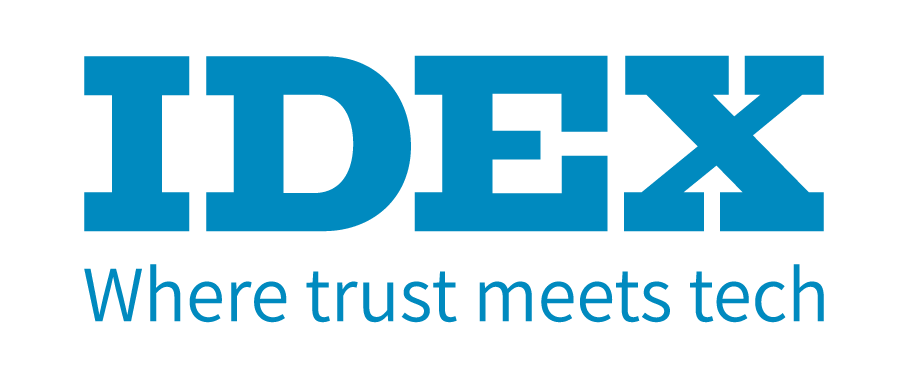
The large disparity between retail jewelry price inflation and supplier price inflation continued in April 2010. Prices at the producer level have risen sharply for since early last fall, while retail prices have held more or less steady. This is an unstable situation, and could lead to either a price bust at wholesale or sharply higher prices at retail later this year. Our forecast: retail prices will begin to rise soon.
Jewelry Producer Price Inflation Continues to Rise Sharply
Producer prices for jewelry rose sharply in April by 10.0 percent, when compared to April 2009, driven primarily by higher prices of precious metal jewelry – mostly gold. This follows price inflation of over 11 percent in March. The Jewelry Producer Price Index as been in the high single-digit range or low double-digit range for all of 2010 as well as the fourth quarter of 2009.
The graph below summarizes both jewelry price inflation for the past twenty-four months.
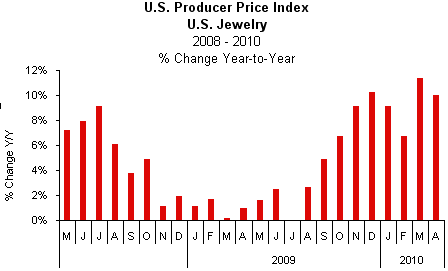
Source: BLS
JPPI Driven By Higher Precious Metals Costs
Precious metals costs jumped in March, hit a short-term plateau in April, and have begun to climb again in May. The graph below compares the JPPI for all jewelry producer prices (red bars) to the JPPI for precious metal jewelry costs (yellow bars).
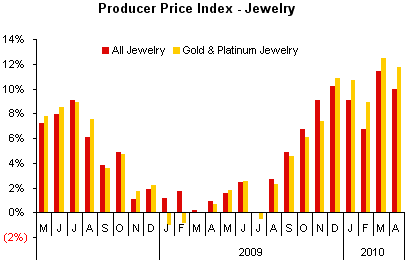
Source: BLS
Producer price inflation for watches had languished just above 1 percent or so for the past five months, but rose to over 2 percent in April, as the following graph illustrates.
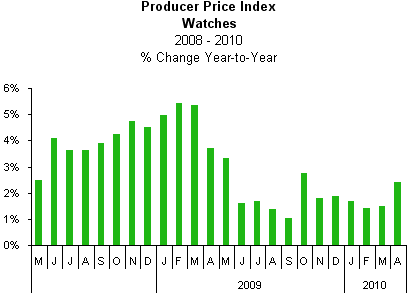
Source: BLS
Jewelry Consumer Price Inflation Remains Modest
Retail prices of jewelry in April were rose by their highest level so far in 2010, but it hardly “moved the needle.” Retail jewelry prices rose by a very modest 1.6 percent in April, when compared to the same month a year ago. This is double the average JCPI for the first four months of 2010 of +0.8 percent - essentially no inflation.
Further, the retail jewelry inflation rate for 2010 – +0.8 percent – remains well below the average retail jewelry inflation rate of +1.8 percent for all of 2009. Arguably inflation of only 1.8 percent in 2009 is really no inflation.
The graph below summarizes the JCPI for the past twenty-four months.
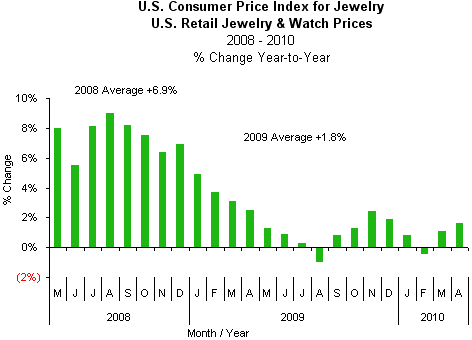
Source: BLS
The key components of the JCPI – jewelry and watches– reveal great disparity between inflation for these two key segments. Watch prices continue to decline at retail, while jewelry prices are rising slightly faster than the overall JCPI. Watch sales are about 11 percent of total jewelry industry sales, while jewelry of all types represents about 89 percent of total
The graph below illustrates inflation among the key components of the JCPI. The green bars are total industry JCPI, while the red bars represent the inflation rate jewelry and the gold bars represent the inflation rate for watches.
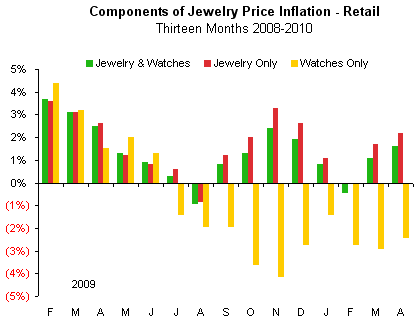
Source: BLS
The Chasm Between Producer and Consumer Jewelry Price Inflation
There is a huge spread between inflation at the jewelry producer level and the jewelry retail store level, as the graph below illustrates.
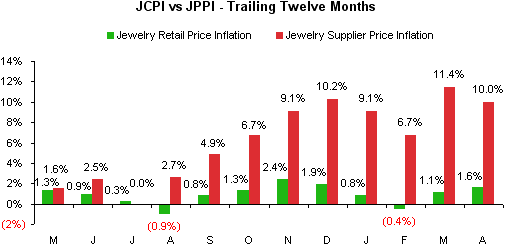 Source: BLS |
In our opinion, this graph illustrates why there will need to be some event that will bring stability to the market. Either wholesale prices will be rolled back – unlikely, in our opinion – or retail prices will show sharp increases later this year – the most likely scenario.
With evidence that shoppers are back in the stores, and with jewelry sales levels that have returned to near pre-recession levels, it is likely that retail jewelers will be able to implement price increases that will not crimp demand just as the party is heating up. However, there is a fine line between the level of price increases which are acceptable to consumers versus what will turn off the spending spigot.